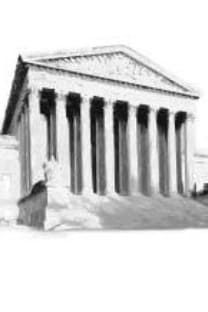Paul Ricoeur'de Sembol Hermeneutiği
Ricoeur açısından dilsel ifadeler çoğunlukla kapalıdır, bulanıktır, açık-seçik değildir. Dilde bir söylemin birincil/literal/lafzi anlamının içinde başka bir anlam kendini gizler. Dilde yer alan bu çok anlamlı yapıyı sembol olarak adlandıran Ricoeur, metaforu çok anlamlılığı yaratması bakımından sembole geçiş aşaması olarak görür. Yorumu da semboldeki bu çok anlamlılığı kavrayan, bu anlamların şifresini çözen bir düşünce faaliyeti olarak belirler. Yorumlama kuramı veya yorumbilgisi olarak Hermeneutiği ise, semboldeki anlam belirsizliğini, anlam çeşitliliğini ve anlam zenginliğini kavramaya yönelik bir yöntem olarak tanımlar. Bu bağlamda bu çalışmanın amacı sembol ile yorum, sembol ile anlam ve sembol ile metafor arasındaki ilişkiyi açıklayarak Ricoeur’de sembol hermeneutiğinin nasıl ortaya çıktığını ortaya koymaktır.
Symbol Hermeneutıcs in Paul Ricoeur
According to Ricoeur, linguistic expressions are mostly obscure, blurred, and not explicit. In language, another meaning conceals itself within the obvious meaning of discourse. Naming this polysemous structure in language as a symbol, Ricoeur sees metaphor as a transitional stage to symbol in terms of creating polysemy. He determines the interpretation as a thought activity that grasps this polysemy in the symbol and decodes these meanings. He defines hermeneutics as a method for grasping the ambiguity of meaning, diversity of meaning, and abundance of meaning in the symbol. In this context, the aim of this study is to reveal how the symbol hermeneutics emerges in Ricoeur by explaining the relationship between symbol and interpretation, symbol and meaning and symbol and metaphor.
___
- Aristoteles. (2002). Yorum Üzerine. (Çev. S. Babür). Ankara: İmge Kitabevi.
- Aristoteles. (2014). Metafizik. (Çev. A. Arslan). İstanbul: Sosyal Yayınlar.
- Aristoteles. (2016). Metafizik. (Çev. Y. G. Sev). İstanbul: Pinhan Yayıncılık.
- Aristoteles. (2017). Poetika-Şiir Sanatı Üstüne-. (Çev. N. Kalaycı). Ankara: Pharmakon.
- Aristoteles. (2018). Poetika-Şiir Sanatı Üstüne-. (Çev. A. Çokona-Ö. Aygün). İstanbul: Türkiye İş Bankası Kültür Yayınları.
- Aristoteles. (2020). Poetika-Şiir Sanatı Üstüne-. (Çev. S. Rifat). İstanbul: Can Yayınları.
- Foucault, M. (2001). Kelimeler ve Şeyler. (Çev. M. A. Kılıçbay). Ankara: İmge Kitabevi.
- George, T. (2021). Hermeneutics. The Stanford Encyclopedia of Philosophy (Winter 2021 Edition). Edward N. Zalta (ed.).
- Kaplan, D. M. (2003). Ricoeur’s Critical Theory, USA-Albany: State University of New York Press.
- Kearney, R. (1994). Modern Movements in European Philosophy. Manchester and New York: Manchester University Press.
- Özlem, D. (2019). Hermeneutik ve Şiir. İstanbul: Notos Kitap.
- Palmer, R. E. (2015). Hermenötik. (Çev. İ. Görener). İstanbul: Düşün Yayıncılık.
- Platon. (2011). Diyaloglar. İon-Şiir Üstüne-. (Çev. T. Ünlü). İstanbul: Remzi Kitabevi, 261-275.
- Ricoeur, P. (1972). The Symbolism of Evil. (Translated from the French by E. Buchanan). Boston-USA: Beacon Press.
- Ricoeur, P. (1973). From Existentialism to Philosophy of Language. Philosophy Today, 17(2), 88-96.
- Ricoeur, P. (1981). Hermeneutics and Human Sciences. (Edited and Translated by J. B. Tompson). New York: Cambridge University Press.
- Ricoeur, P. (2007). Yoruma Dair – Freud ve Felsefe. (Çev. N. Alpay). İstanbul: Metis Yayınları.
- Ricoeur, P. (2009). Yorumların Çatışması- Hermenoytik Üzerine Denemeler Birinci Cilt. (Çev. H. Arslan). İstanbul: Paradigma Yayıncılık.
- Ricoeur, P. (2017). Eleştiri ve İnanç: François Azouvi ve Marc de Launay ile Söyleşi. (Çev. M. Rıfat). İstanbul: Yapı Kredi Yayınları.
- Ricoeur, P. (2019). Yorum Teorisi- Söylem ve Artı Anlam. (Çev. G. Y. Demir). İstanbul: Pinhan Yayıncılık.
- Sev, Y. G. (2017). Dağ Fare Doğurdu: Aristoteles Külliyatında Hermeneia. Cogito, 89, 78-85.
- Thompson, J. B. (2003). Critical Hermeneutics – A study in the thought of Paul Ricoeur and Jürgen Habermas, New York: Cambridge University Press.
- Yayın Aralığı: Yılda 2 Sayı
- Yayıncı: Bursa Uludağ Üniversitesi
Sayıdaki Diğer Makaleler
Dönüşümün İmkânı Olarak Tecrübe: Dewey ve Gadamer’in Bakış Açılarıyla
Mütevazi mi olmalıyız? Dummett ve McDowell Anlam Kuramları Üzerine
Eleştirel Bir Deneme: Heidegger’in Düşüncesi Bağlamında “Logos”a Dair Yeni Bir Karakterizasyon
Modern Sanatın Doğuşu: Flaneur Figürü ve Aktör-Ressam Manet
Estetiğin Etik Dönüşü: Jacques Rancière’in Jean-François Lyotard Eleştirisi
Yapay Bilinç Tartışmasında Biyolojik Doğalcı Yaklaşımın Hataları
Atom Teorileri Paradigma Değişimi Açısından Değerlendirilebilir mi?
Vural BAŞARAN, Tarık Tuna GÖZÜTOK
